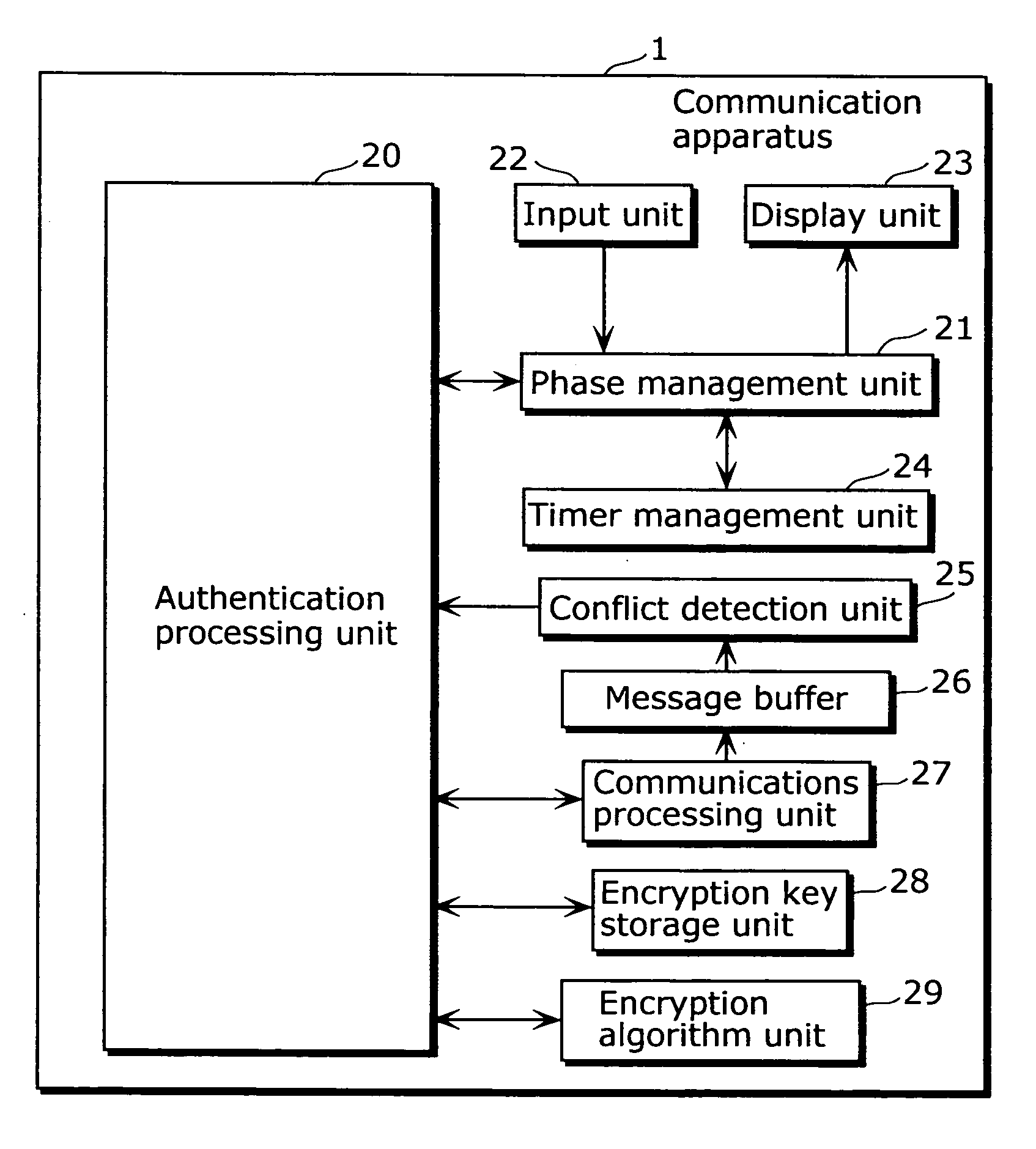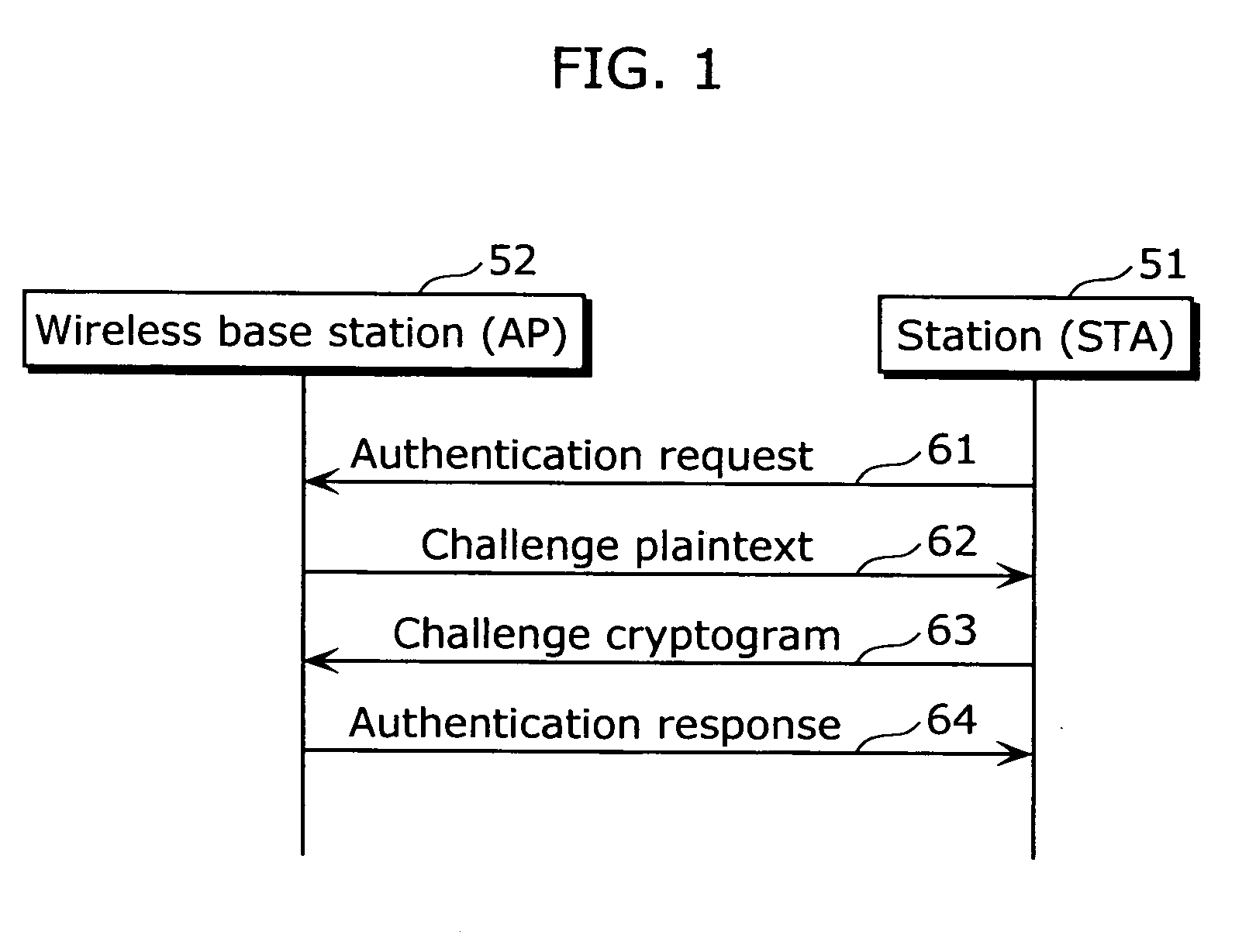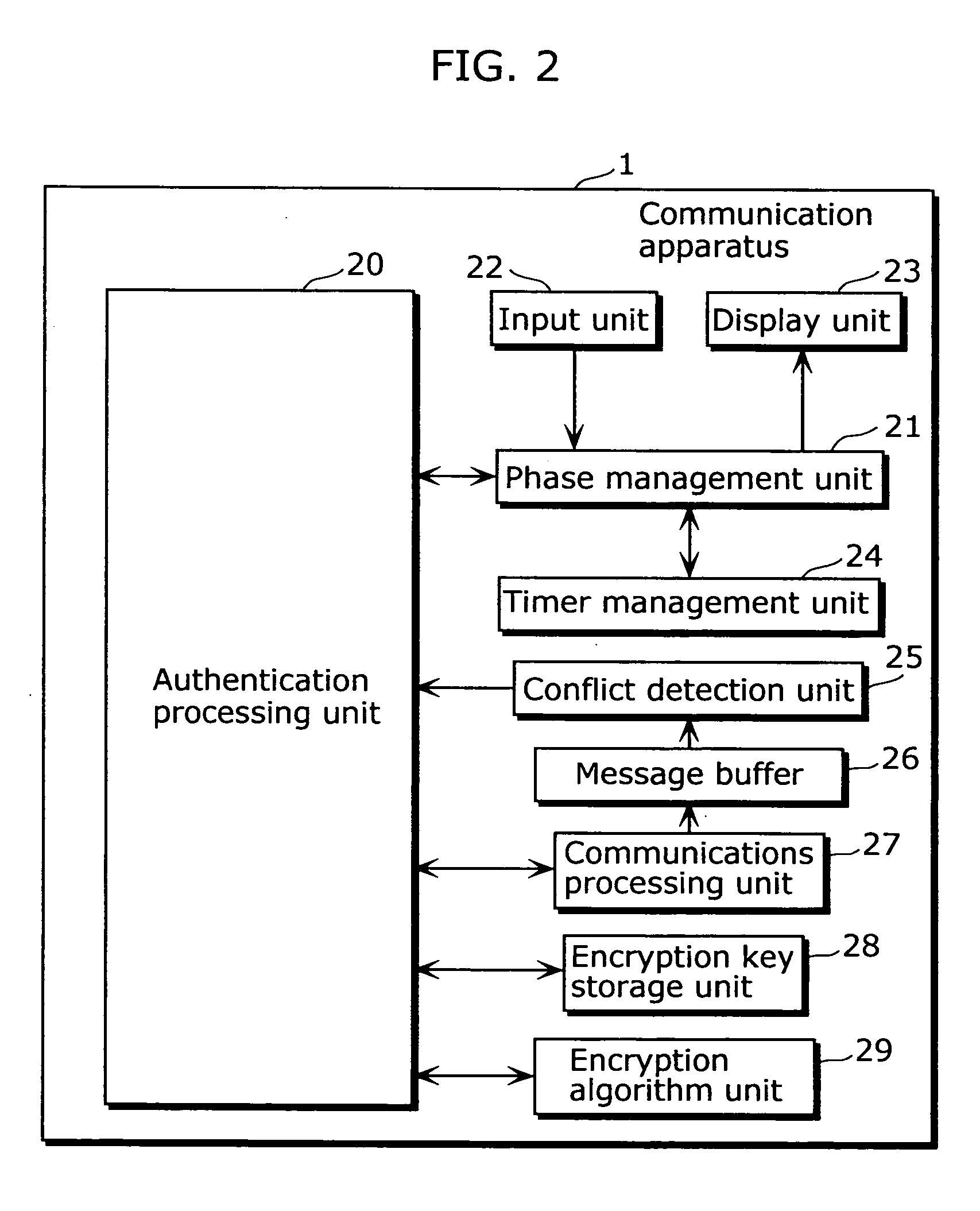Communication Apparatus and Authenticating Method
- Summary
- Abstract
- Description
- Claims
- Application Information
AI Technical Summary
Benefits of technology
Problems solved by technology
Method used
Image
Examples
first embodiment
[0043]FIG. 2 is a block diagram that shows the structure of a communication apparatus in the first embodiment of the present invention.
[0044]A communication apparatus 1 is a communication apparatus for performing communications with other communication apparatuses, after performing an initial authentication for a connection with another communication apparatus, and as shown in FIG. 2, includes an authentication processing unit 20, a phase management unit 21, an input unit 22, a display unit 23, a timer management unit 24, a conflict detection unit 25, a message buffer 26, a communication processing unit 27, an encryption key storage unit 28, as well as an encryption algorithm unit 29.
[0045]The authentication processing unit 20 manages and controls the connection and authentication processing sequence, and directs the transmission processing unit 27 to send and receive a message related to authentication (below, this is also called an authentication message). In addition, the authent...
second embodiment
[0069]FIG. 6 is a figure that shows the authentication sequence in the second embodiment. With respects to the composition of the communication apparatus, the messages used, as well as the common states in the authentication of the master and slave communication apparatuses, the second embodiment is the same as the first embodiment and the description is omitted.
[0070]When the master communication apparatus 1a receives a directive from a button on the apparatus' own input unit 22, it sends out the notification information 10 in a broadcast communication and simultaneously starts up the apparatus' own timer 2.
[0071]Meanwhile, the slave communication apparatus 1b starts up its own timer 5 and waits for the notification information 10 from the master communication apparatus 1a. When the slave communication apparatus 1b receives a plurality of the notification information 10 while the timer 5 is in effect, from not only the master communication apparatus 1a but also from an apparatus ot...
third embodiment
[0075]FIG. 8 and FIG. 9 are figures that show the authentication sequence in the third embodiment. With respects to the composition of the communication apparatus, the messages used, as well as the common state in the authentication for a master and slave communication apparatuses, the third embodiment is the same as the first embodiment and the description is omitted.
[0076]Once the master communication apparatus 1a receives a directive from a button on the apparatus' own input unit 22a, the master communication apparatus 1a immediately sends out the notification information 10 in a broadcast communication. Meanwhile, once the slave communication apparatus 1b receives a directive from a button on the apparatus' own input unit 22b, the slave communication apparatus 1b immediately sends out a connection information request 11 by broadcast communication. In the example in FIG. 8, the authentication sequence is shown for the case where input from a button on the input unit 22 is receive...
PUM
 Login to View More
Login to View More Abstract
Description
Claims
Application Information
 Login to View More
Login to View More - R&D
- Intellectual Property
- Life Sciences
- Materials
- Tech Scout
- Unparalleled Data Quality
- Higher Quality Content
- 60% Fewer Hallucinations
Browse by: Latest US Patents, China's latest patents, Technical Efficacy Thesaurus, Application Domain, Technology Topic, Popular Technical Reports.
© 2025 PatSnap. All rights reserved.Legal|Privacy policy|Modern Slavery Act Transparency Statement|Sitemap|About US| Contact US: help@patsnap.com



